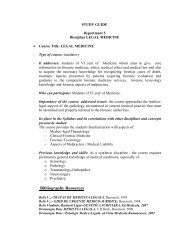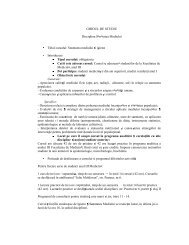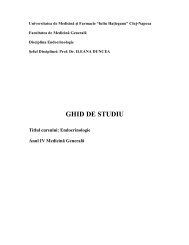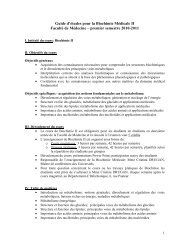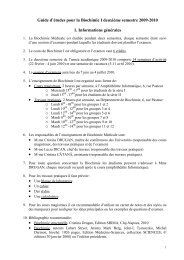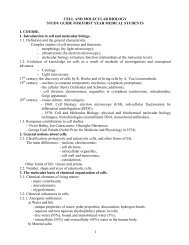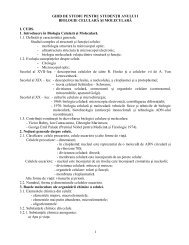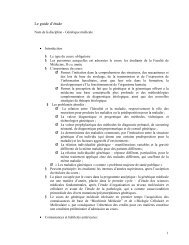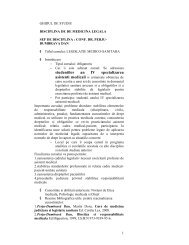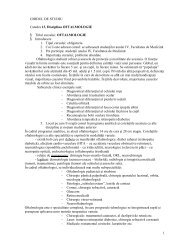Study Guide RADIOLOGY - UMF
Study Guide RADIOLOGY - UMF
Study Guide RADIOLOGY - UMF
You also want an ePaper? Increase the reach of your titles
YUMPU automatically turns print PDFs into web optimized ePapers that Google loves.
<strong>Study</strong> <strong>Guide</strong> – Radiology – Faculty of Medicine - IV th Year 10• Radiographic film covered with a fine film of silverbromide (photographic emulsion)• Phosphorescent principle: is based on the effect of photochemicaldissociation of the molecule of silver bromide (effect used inrevealing the film: Ag blackens the film)• Transparency = black (incident rays are not absorbed andreach the film box, causing dissociation of the molecule ofsilver bromide)• Opacity = white (incident rays are absorbed, do not get to thefilm)• X ray is invisible !!!o Digital receiver• Basic mechanism: scintillation detectors light analog-digitalconverter electrical impulsesdigital processing digital /analogue reconversion Image Display• Types of detectors:• Photosensitive phosphorus plates• Scintillation crystalso Dedicated X ray devices:• Mammography• Angiography• Device for dental radiography• OrthopantomographySample questions for the written exam of Radiology1. Which of the following statements is true:a. The cathode is connected to a high voltage circuitb. Radiography is based on photochemical effects of Rxc. The basis for the radiographic image is fluoroscopyd. Secondary radiation cannot be tackled with antidiffusion gridse. The anode usually contains atoms with low atomic numberAnswer: b




